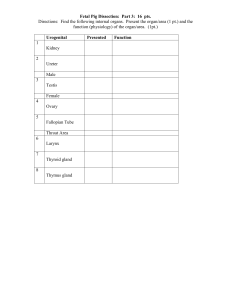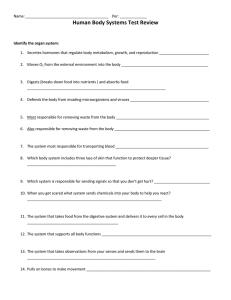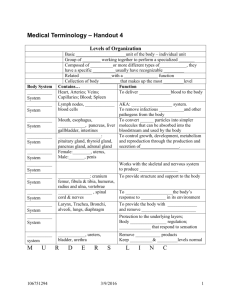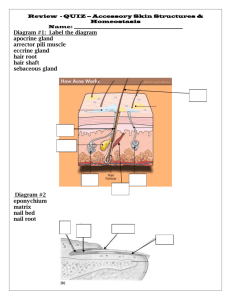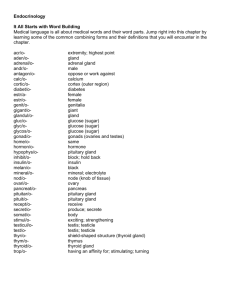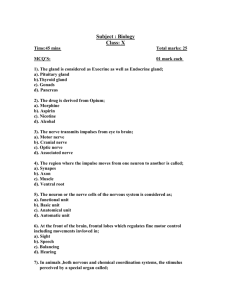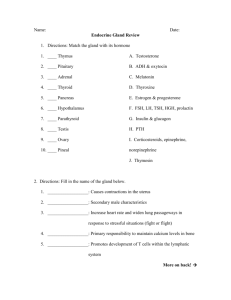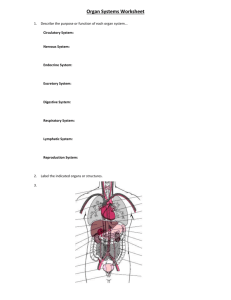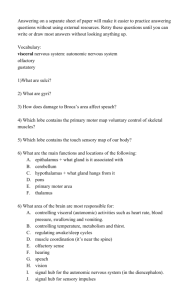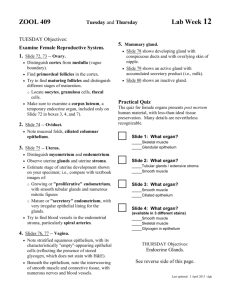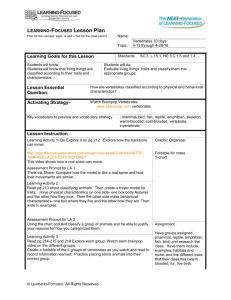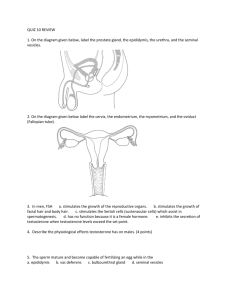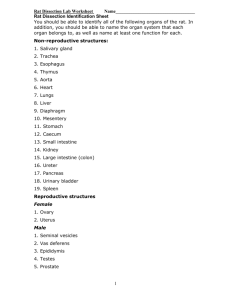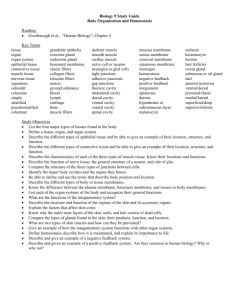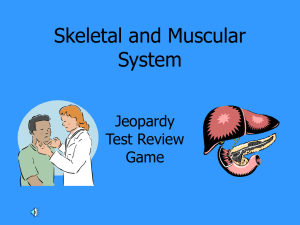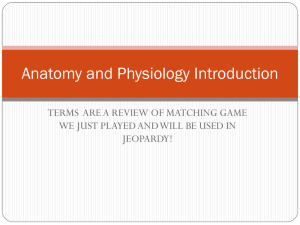AECL/BIOL 365: Exam 2 Review 1. Birds have a single gland used
advertisement
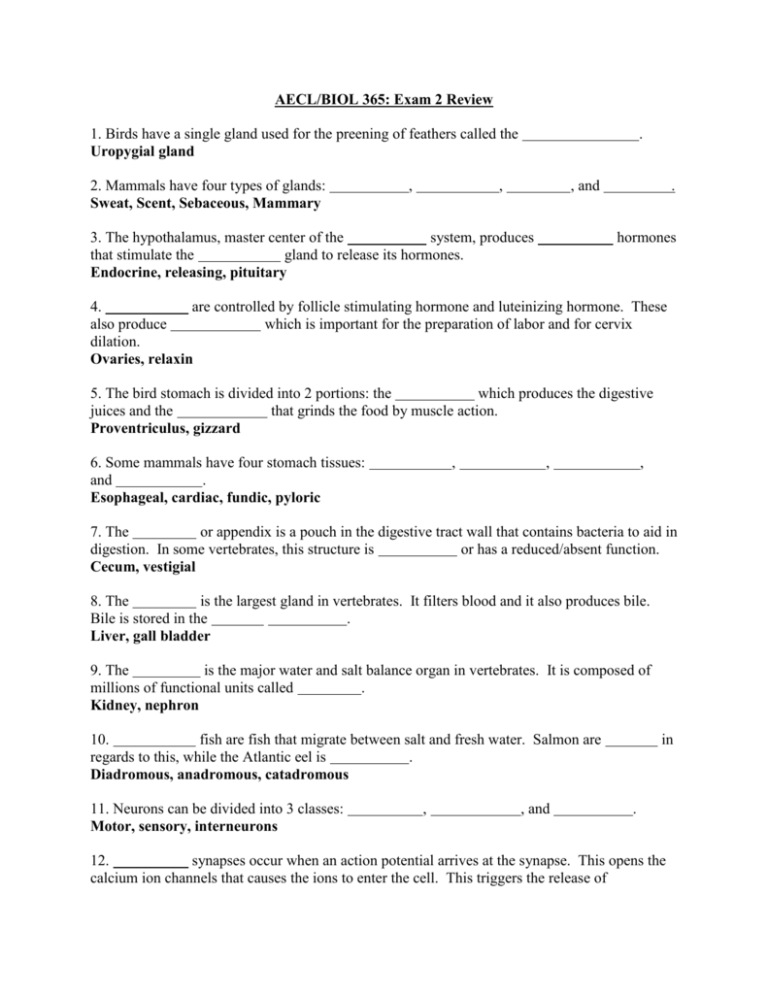
AECL/BIOL 365: Exam 2 Review 1. Birds have a single gland used for the preening of feathers called the Uropygial gland 2. Mammals have four types of glands: Sweat, Scent, Sebaceous, Mammary , . , , and 3. The hypothalamus, master center of the system, produces that stimulate the gland to release its hormones. Endocrine, releasing, pituitary . hormones 4. are controlled by follicle stimulating hormone and luteinizing hormone. These also produce which is important for the preparation of labor and for cervix dilation. Ovaries, relaxin 5. The bird stomach is divided into 2 portions: the which produces the digestive juices and the that grinds the food by muscle action. Proventriculus, gizzard 6. Some mammals have four stomach tissues: and . Esophageal, cardiac, fundic, pyloric , , , 7. The or appendix is a pouch in the digestive tract wall that contains bacteria to aid in digestion. In some vertebrates, this structure is or has a reduced/absent function. Cecum, vestigial 8. The is the largest gland in vertebrates. It filters blood and it also produces bile. Bile is stored in the . Liver, gall bladder 9. The is the major water and salt balance organ in vertebrates. It is composed of millions of functional units called . Kidney, nephron 10. fish are fish that migrate between salt and fresh water. Salmon are regards to this, while the Atlantic eel is . Diadromous, anadromous, catadromous 11. Neurons can be divided into 3 classes: Motor, sensory, interneurons , , and in . 12. synapses occur when an action potential arrives at the synapse. This opens the calcium ion channels that causes the ions to enter the cell. This triggers the release of into the synaptic cleft. This then binds to the exciting it. The postsynaptic is propagated. The neurotransmitter is then degraded. Then it is resynthesized, returned, and stored. Chemical, neurotransmitter, postsynaptic membrane, action potential 13. is a type of chemoreception where its receptor cells are found primarily on the tongue. One type of receptor cell, , is used to taste for toxicity. Taste, bitter 14. In vertebrate, the organ of balance is the Labyrinth, cochlea , and the organ of hearing is the . 15. In the eye, the provides achromatic vision that is used for vision in dim light. Whereas, provide chromatic vision that is useful during abundant light. Rods, cones 16. vision produces a broad overlap of fields of vision that allows for more depth perception. On the other hand, vision provides a wide field of vision but with less depth perception. Binocular, monocular 17. species produce many offspring that have low survival and have little parental care. species produce a few offspring that have high survival with a great deal of parental care. R-selected, k-selected 18. In , there is one male and one female pair bond that lasts for at least the breeding. is where there are multiple pair bonds that occur at one time or sequentially. is where there are no pair bonds. Monogamy, Polygamy, Promiscuity 19.
